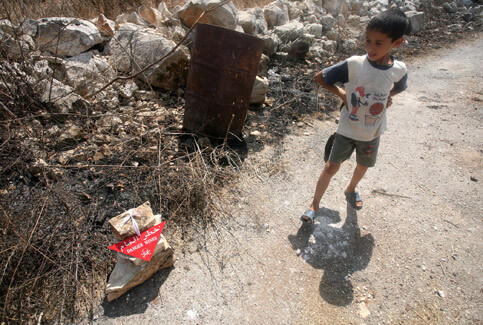Mine Action Coordination Centre Southern Lebanon 29 November 2006

A marked site of unexploded ordnance (MACCSL)
Casualties from Unexploded Ordnance
Cluster Bomb Contamination
Types and Quantities of Cluster Bombs
Unexploded Ordnance Other than Cluster Bombs
Operational Response
Funding
Source: UN Mine Action Coordination Centre of South Lebanon, National Demining Office of Lebanon,�20 November 2006.
Related Links